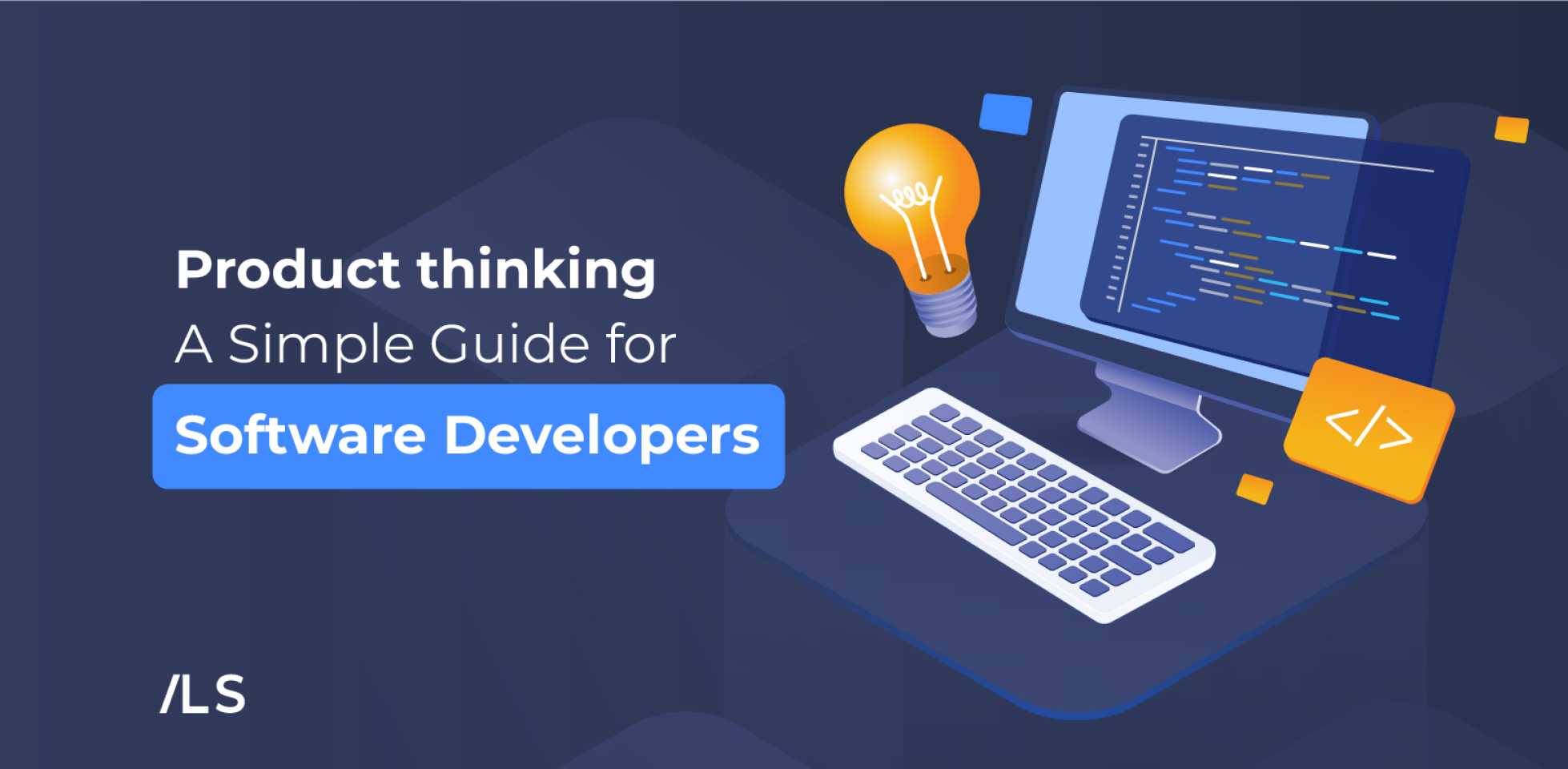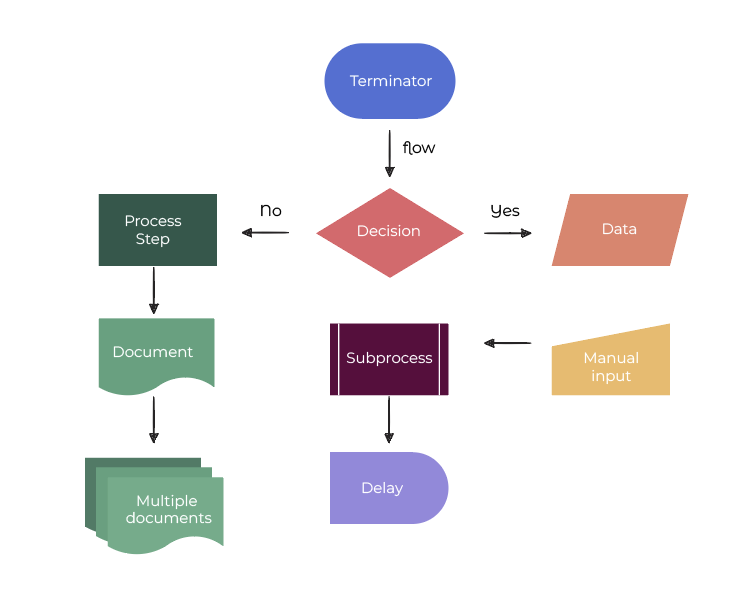Blog
Stay updated with our new news!
Product thinking: A Simple Guide for Software Developers

Introduction
This article is intended for software developers and technical professionals who may sometimes overlook the fundamental goal of delivering genuine value to users. We will explore the concept of product thinking and demystify what it truly entails.
From the moment I began writing code, I was captivated by the power to control computers—even down to manipulating individual pixels on the screen. I believed that this ability could transform lives just as technology had transformed my own, fueling my drive to master everything from creating animations to learning low-level languages like C and developing high-performance applications.
When project managers handed over requirements, my focus was solely on technical feasibility rather than on how these requirements would truly serve the end user or client. My primary goal was to demonstrate technical excellence.
Over time, however, as I built more software and deepened my understanding, my perspective evolved. Working alongside a remarkable colleague who consistently questioned every requirement made me realize that the true purpose of technology is to meet customer needs. I learned that programming languages and tools are merely means to an end—what truly matters is creating products that benefit users.
What Is Product Thinking?
Many software teams get stuck in a feature-focused mindset — delivering tickets without keeping the bigger picture in view. Product thinking shifts the focus toward solving real-world problems and ensuring that every feature or enhancement provides meaningful value to end users, and by extension, to the business.
Adopting product thinking helps developers evolve from mere code deliverers to true solution creators. This mindset strengthens collaboration with product managers, designers, and other stakeholders, resulting in a more holistic approach to product development.
To fully embrace product thinking, we must ask: Why does a product exist? Of course, it exists to solve a problem faced by many users. I like to view this concept through the lens of the Jobs-to-Be-Done framework. Although the name might sound unusual at first, it offers valuable insights.
Jobs-to-Be-Done
A Job-to-Be-Done is a statement that precisely describes what a group of people is trying to achieve in a given situation. This framework and business theory explain why customers buy products — not for the product itself, but for the solution it provides.
The Jobs-to-Be-Done framework is an approach to developing products based on understanding both the customer’s specific goal (or “job”) and the thought processes that lead the customer to “hire” a product to complete that job. When we examine a product through this lens, we seek to discover what users are truly trying to achieve when they purchase a product or service.
How Can You Apply This Approach in Development?
The theory encompasses many concepts, but the basic idea is simple: focus on what the customer is trying to accomplish rather than the product itself. This perspective helps determine whether our requirements and application align with the client’s needs. Consider the following examples:
The Drill Example:
Customers do not necessarily want a drill — they need a hole in the wall. An alternative solution might be preferable if a user can obtain a hole without a drill. Asking more profound questions, such as why the user needs a hole, can uncover underlying motivations — perhaps the desire to hang a picture and create a welcoming space.
Uber Eats:
When someone orders through Uber Eats, they’re not simply ordering food — they’re hiring the service to satisfy hunger quickly and conveniently, without the need to cook or dine out. This insight can help focus on streamlining the ordering process, ensuring quick delivery times, and maintaining high food quality during transit.
Adopting this mindset will significantly assist you in recognizing and analyzing requirements to maximize customer benefits.
Capture Business Logic
When analyzing and reviewing requirements, your role as a developer is to identify and clarify any challenges or hidden complexities — even in seemingly simple features. For example, a requirement to implement a one-click purchase might appear straightforward at first glance. However, its implementation may reveal numerous UX challenges, such as secure authentication, robust error handling, and a seamless confirmation process.
By capturing these hidden complexities early, you can provide more accurate estimations and keep stakeholders well-informed. Clear communication about potential challenges fosters trust and collaboration across teams, ensuring the final product is technically sound and user-centric.
Collaborative Discovery
To truly understand a product, you must be curious and eager to learn. I always prefer to work collaboratively with my team — engaging product managers, designers, and fellow developers — to gain a comprehensive understanding of the product. Avoid working in silos; instead, leverage tools that facilitate the sharing of ideas and requirements. Some practical tools include:
1. Process Maps
Process maps are diagrams composed of boxes and lines that illustrate complex workflows or processes. They outline individual steps within a process, identify task owners, and detail expected timelines. These maps facilitate clear communication among stakeholders and help reveal potential areas for improvement. Typically, process maps start at a macro level and then drill down into finer details as needed. While various types exist, even basic flowcharts can be highly effective. Documenting complex processes in this way enhances communication and serves as valuable reference material. Although product managers or analysts often create these maps, developers should also contribute — after all, we build the end product.

2. User Journeys
User journeys are scenario-based sequences that describe the steps a user takes to achieve a high-level goal with a company or product, often spanning multiple channels over an extended period. Mapping a user journey involves understanding the experience across various touchpoints. For example, consider a new patient looking for a doctor: this journey might include researching a practice’s website, calling to schedule an appointment, receiving emails, visiting the office, accessing a patient portal, and following up with a phone call. Given the complexity of such journeys, contextualizing each action with insights into the user’s emotions and thoughts can be extremely useful for optimizing the overall experience.
A new-patient journey comprises many touchpoints over a long period.

Software developers play a crucial part in shaping product direction and requirements by leveraging their technical knowledge and user experience insights. In advocating for solutions that harmonize feasibility and user value, developers contribute significantly to the decision-making process alongside project managers and clients. Understanding the intricate nature of user journeys, such as that of a new patient seeking medical care, underscores the importance of considering emotions and thoughts at each touchpoint to enhance the overall experience.
Nailing Down the Scope
Establishing a clear scope is like drawing a blueprint before constructing a house. Imagine being commissioned to build a home where the client casually says, “I want a mansion.” Without a detailed plan, you risk pouring resources into extravagant features that may prove unnecessary or impractical. This scenario mirrors what happens in software development when scope creep takes over — features and changes keep piling up, and the project drifts far from its original goals.
Consider this real-world story: In one project, a client initially requested a straightforward user registration process. The brief was simple : Create an intuitive way for new users to sign up. However, as development progressed, additional features began to emerge. The client requested social media integrations, two-factor authentication, and a highly customizable profile module. Though valuable, each new feature threatened to make the project far more complex than initially planned.
Recognizing the danger of scope creep, We initiated a meeting with the project manager and the client to revisit the project’s core objective. We asked, “What real problem are we trying to solve?” The answer was clear: the primary goal was to ensure a smooth and secure onboarding experience for new users. By refocusing on this fundamental need, we tightened the scope. We decided to prioritize the essential registration process for the initial release and table the additional features for subsequent iterations. This disciplined approach ensured we delivered a robust, user-friendly solution on time and within budget.
Here are some practical strategies to tighten the scope in your projects:
- Prioritize Core Functionality: Identify the must-have features directly addressing the user’s primary need. Ask yourself, “Does this feature solve a critical problem?” If not, consider deferring it to a later phase.
- Engage in Early Stakeholder Discussions: Collaborate closely with project managers, clients, and other stakeholders to align on the project’s objectives. Use your expertise to highlight potential complexities and advise on realistic, phased implementations.
- Use Prototyping and MVPs: Develop a Minimum Viable Product (MVP) that includes only the essential features. This keeps the project focused and provides a tangible product that stakeholders can interact with, enabling informed decisions on future enhancements.
- Set Clear Milestones and Review Points: Establish checkpoints where the team reviews progress against the agreed-upon scope. This allows for early detection of deviations and will enable you to course-correct before small changes accumulate into a more significant problem.
By setting and adhering to a well-defined scope, you ensure that every line of code and every feature contributes to delivering real value to the user. This focused approach conserves resources and helps maintain project clarity and manageability. As you move forward, remember that tightening the scope isn’t about stifling creativity , but building a strong, scalable foundation to support future innovation.
Ultimately, a disciplined focus on scope is your safeguard against runaway projects. It empowers you to deliver technically sound products that align with user needs, ensuring long-term success and satisfaction for everyone involved.
Summary
In conclusion, shifting from a purely technical mindset to embracing product thinking can transform how you approach software development. By focusing on solving real user problems, capturing hidden complexities, collaborating effectively with your team, and maintaining clear project scope, you lay the groundwork for creating products that truly add value. Remember, technology is not just about writing code — it’s about crafting solutions that enhance people’s lives. As you continue your journey, keep in mind:
“Simplicity is the ultimate sophistication.” — Leonardo da Vinci
Transitioning from a purely technical perspective to embracing product thinking has the potential to revolutionize your software development approach. It’s essential to recognize that technology extends beyond code writing – it involves devising solutions that positively impact individuals’ lives.
Share:
Leave a Reply